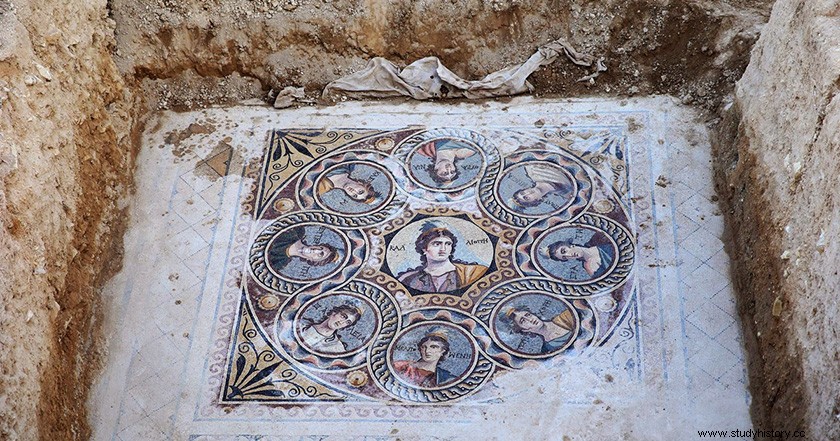
In the late 20th century, the government of Turkey approved one of the most important hydraulic projects in the world. Specifically, the construction of 22 dams between the Tigris and Euphrates rivers, with the intention of converting the desert south of the country into a new irrigation area.
This project, which ultimately served to improve agriculture and livestock in these regions, did not take into account their rich historical past. This is how one of the areas in the world with the most archaeological sites, ranging from prehistory to cultures such as the Hittites, the Assyrians, the Persians, the Greeks or the Romans, saw how hundreds of these sites were buried under the waters of the 20th century dams. All this without counting the thousands of displaced people it caused.
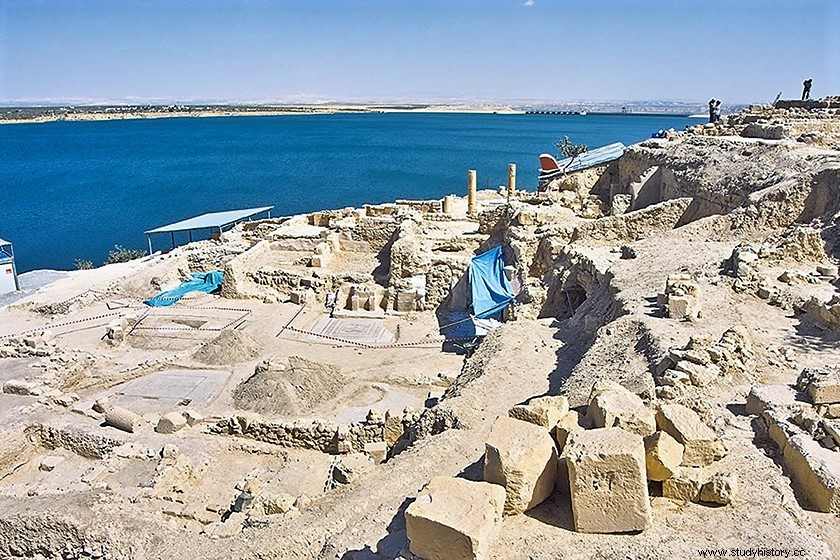
View of the excavations on the Zeugma hill, with the Birecik dam in the background.
To get to know Zeugma we must go to the province of Gaziantep, specifically to the town of Belkis, which is about 20 kilometers from the border with Syria. There we will see what remains of the Roman site of the city of Zeugma after the floods, at the end of the 20th century. Despite this, it happens to be one of the places that has best preserved Roman mosaics, and which has resulted in the largest museum in the world of this type of Roman paving.
A brief history of Zeugma.
The city on the banks of the Euphrates was founded around 300 BC. by one of the generals of the deposed Alexander the Great. Specifically Seleucus I, founder of the Seleucid Empire. The chosen place was not by chance, since from that place one of the main passages of the Euphrates River was controlled.
But its true splendor will come from the Roman conquest. This occurred in the year 64 BC. through Pompey, who will rename it Zeugma. In the following years it will become one of the most important cities in Anatolia. On the occasion of the wars against the Parthians, the IV Scythian Legion arrived in the city, and settled there in order to serve as a spearhead for the conquest of the Parthian Empire.
One of the first consequences was the construction of a bridge to cross the Euphrates, since previously it was done by barge. This gave the city a decisive position on the Silk Road between China and Antioch, the latter one of the main Mediterranean ports at that time. All this brought rich merchants and businessmen to the city, who competed with governors and soldiers to see who had the best villas, with the most magnificent pools, and the most impressive mosaics.
In its heyday it could have had nearly 80,000 inhabitants. This was before it fell to the Sassanid Empire, under Shapur I, in 256 AD. Despite being inhabited centuries later by the Byzantine Empire, it never recovered that splendor. So finally, in the High Middle Ages and with the arrival of the Arabs, it will plunge into the greatest oblivion.
The discovery of the 20th century.
Approximately in the 1960s, the Zeugma treasure was discovered, but the lack of measures on the part of the Turkish government led the site to continued looting. As those responsible for this site say today; Possibly many of the mosaics that adorn the museums of half the world, with the inscription "eastern Mediterranean" are from Zeugma.
The controlled excavations begin at the end of the 80's and since then the campaigns have continued, showing the world the most beautiful mosaics. But the news that the Birecik dam would flood the site triggered huge protests from the archaeologists present.
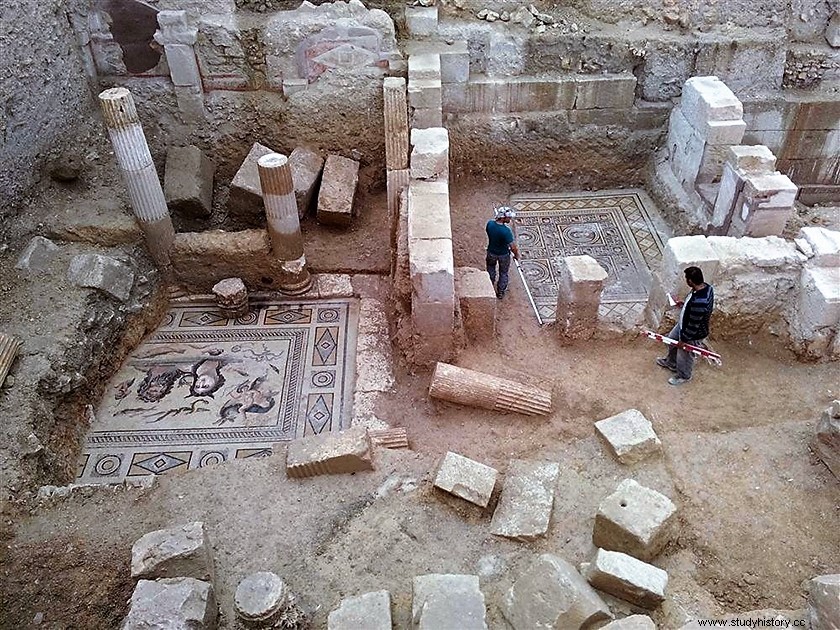
Excavations of the year 2014
In 1995 the French archaeologists Pierre Leriche and Catherine Abadie-Reynal landed on the project to show the world the Roman jewel that was going to be drowned under the waters. The following years were a race against time, several archaeologists from all over the world joined the project to save as many objects and mosaics as possible.
Finally in the summer of the year 2000, and with several campaigns underway, the water covered much of Zeugma. Specifically, the entire flat area of the city was flooded, which by the way was occupied by the ancient Greek city, which was lost almost all of it, in addition to more than 30% of the entire area of the hill.
Despite everything, the excavations have continued to give joy in the following years, specifically a campaign started in 2007 that resulted in the extraction in 2014 of the spectacular mosaic of the nine muses from Greek mythology.
The largest mosaic museum in the world.
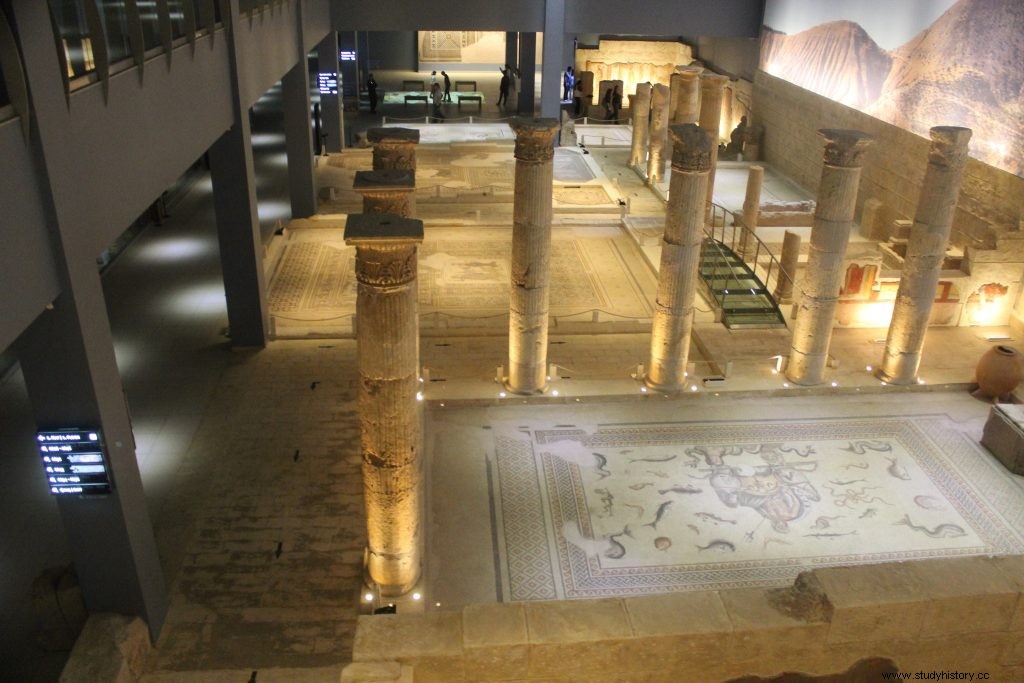
The Zeugma Mosaic Museum
Not everything is going to be excesses by the Turkish authorities. On September 9, 2011, the opening of the Zeugma Mosaic Museum took place. On a plot of 40,000 m2, of which 7,000 belong to the exhibition area. These dimensions make it the largest in the world in its category. Your ticket costs just over €3. On the other hand, its schedule in summer is from 9 am to 7 pm and in winter from 9 am to 5 pm , every day of the year.
It exhibits all the remains found in the archaeological campaigns of Zeugma, highlighting the exhibitions of Roman fountains, frescoes, sculptures, steles and a bronze statue of the god Mars. But what makes it unique are the more than 2,000 m2 of mosaics, obviously of all kinds. Finally I would like to show you a small personal selection.

Two images that traveled the world at the end of the 20th century. In the upper part, the image of the Afghan girl that the National Geographic photographer took in a refugee camp in Pakistan in 1984. While in the lower part, the gypsy girl, a title given to the most famous mosaic of those who were saved from en Zeugma's early campaigns. Two images loaded with symbolism and with a spectacular resemblance.
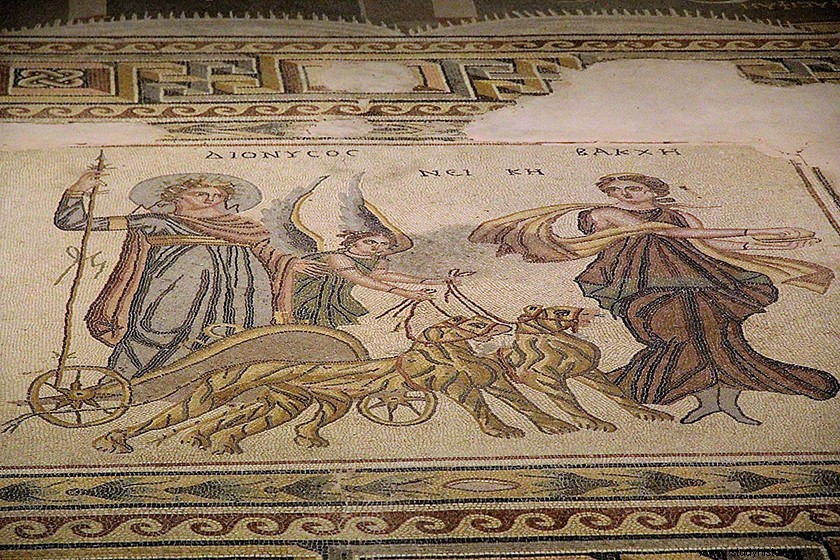
The triumph of Dionysus, known in the Roman world as Bacchus, the God of agriculture and the theater.
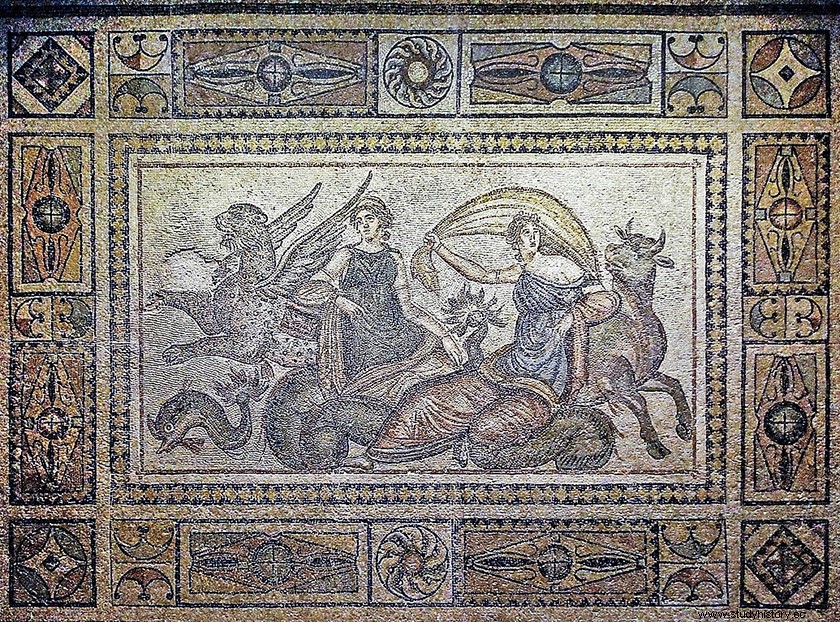
The Rapture of Europa, one of the most famous scenes in Greek mythology. The god Zeus turned into a bull kidnaps the princess Europa.
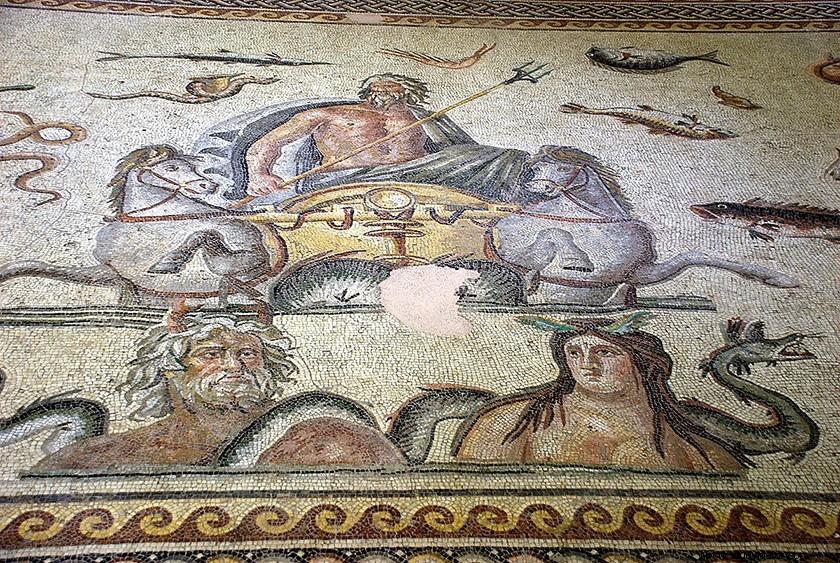
The mosaic of Poseidon, armed with his trident and surrounded by fish and mythological animals, half horse, half snake.
As you can see, it is a small sample of what can be seen in the Zeugma Mosaic Museum. But that serves to get an idea of the enormous archaeological treasure, which the waters of the Euphrates River have buried.
More info:bbc zeugmamosaicmuseum
Images:commons.wikimedia
